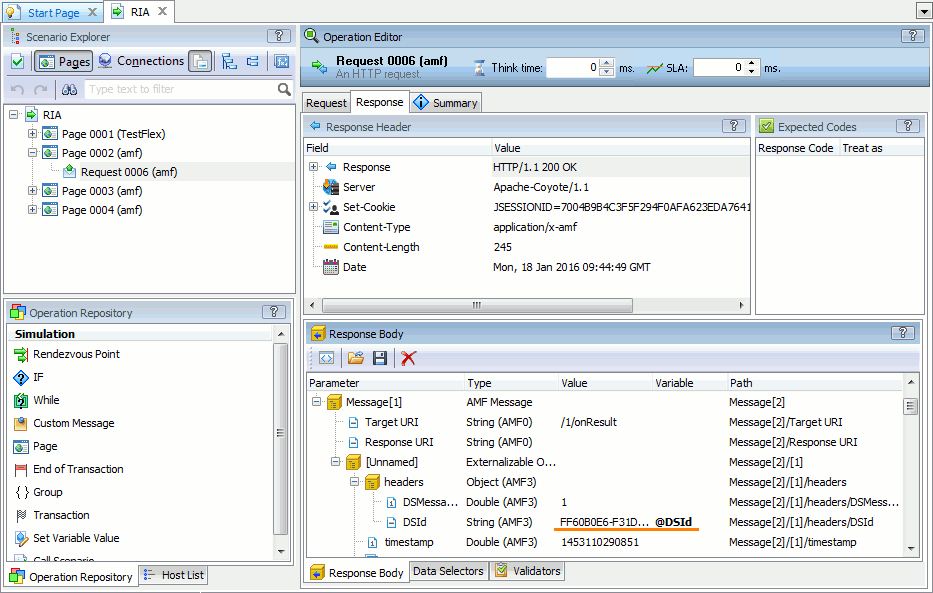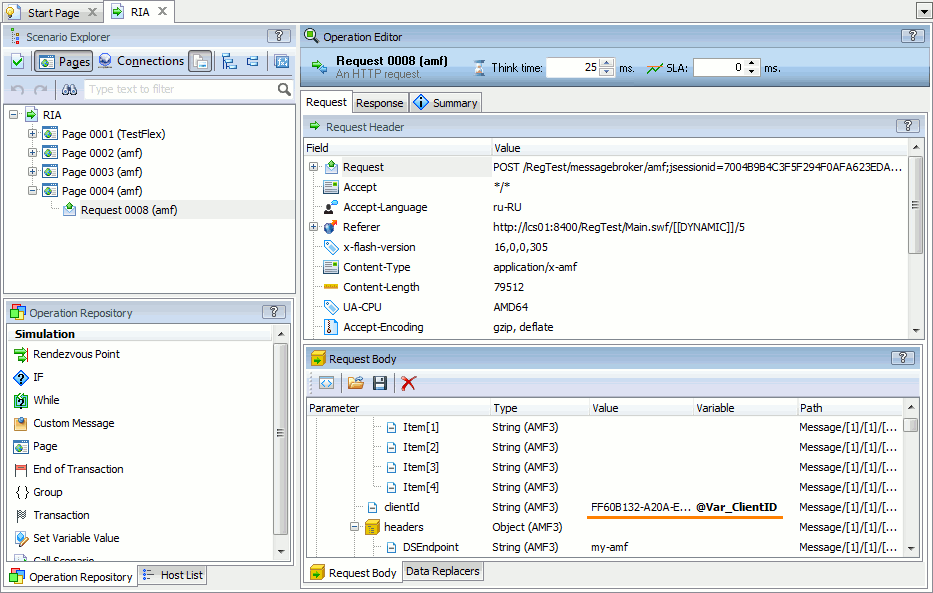In LoadComplete, you can test Rich Internet Applications (RIA), such as Flash, Flex, Silverlight, and others. These applications use special protocols to exchange data with web servers. This topic explains how you can parameterize requests that use those protocols.
What Applications and Protocols Are Supported
LoadComplete supports web applications that use the following data formats and HTTP-based protocols to exchange data with web servers:
What Does Support for Specific Protocols Mean
LoadComplete decodes data sent to and received from the server through the supported protocols. It can retrieve individual values from the received data packets and encode data into the sent packets. You can view received request and response data in the Scenario editor. Below are sample images:
For each parameter, LoadComplete displays the parameter name, its type and value, the path and the Variable column.
How You Parameterize Requests
You can parameterize requests, that is, replace recorded parameters in the requests with a variable that contains the needed data:
-
Custom data. Use this approach to diversify virtual user data. You may need this to vary requests simulated by various virtual users and make testing conditions closer to real life. You can parameterize requests with data loaded from external data sources or with data generated by LoadComplete.
-
Data extracted from previous server responses. Use this approach if the server returns data used by subsequent requests (like a user token or session ID). Because this data changes every time a user connects to the web site, you cannot run tests successfully with recorded data only. The solution is to configure your scenarios so that it can extract the needed values from server responses and then insert them to further requests.
You can parameterize RIA requests by using the Parameterization Wizard (see the wizard description to learn how to do it) or you can parameterize them manually:
-
To use data extracted from an external file or generated by LoadComplete, create a variable that will provide access to the needed test data. See Using Variables.
To use data extracted from a previous response, configure your scenario to retrieve the needed data from a server response and save it to a variable. See Extracting Data From Responses.
-
In your scenario, select a request to parameterize.
-
In the Request Body panel of the request, select the parameter whose recorded value you want to replace. Note that you cannot parameterize composite parameters (those that have child items) directly - you need to parameterize each of its child items.
-
In the Variable column, specify the variable whose value you want to use instead of the recorded value.

We recommend that you select a variable whose data type matches the parameter data type. If LoadComplete fails to convert the variable value to the parameter data type, the test server may raise an error.
Remarks
-
LoadComplete does not change the request structure. You can change parameter values, but you cannot create or delete parameters or change their type.
-
For information on specifics of setting certain values, see Specifying Appropriate Request Data.
See Also
Parameterizing Requests in the Scenario Editor
Extracting Data From Responses
Supported Rich Internet Applications
Supported Protocols and Data Formats

 What Applications and Protocols Are Supported
What Applications and Protocols Are Supported
